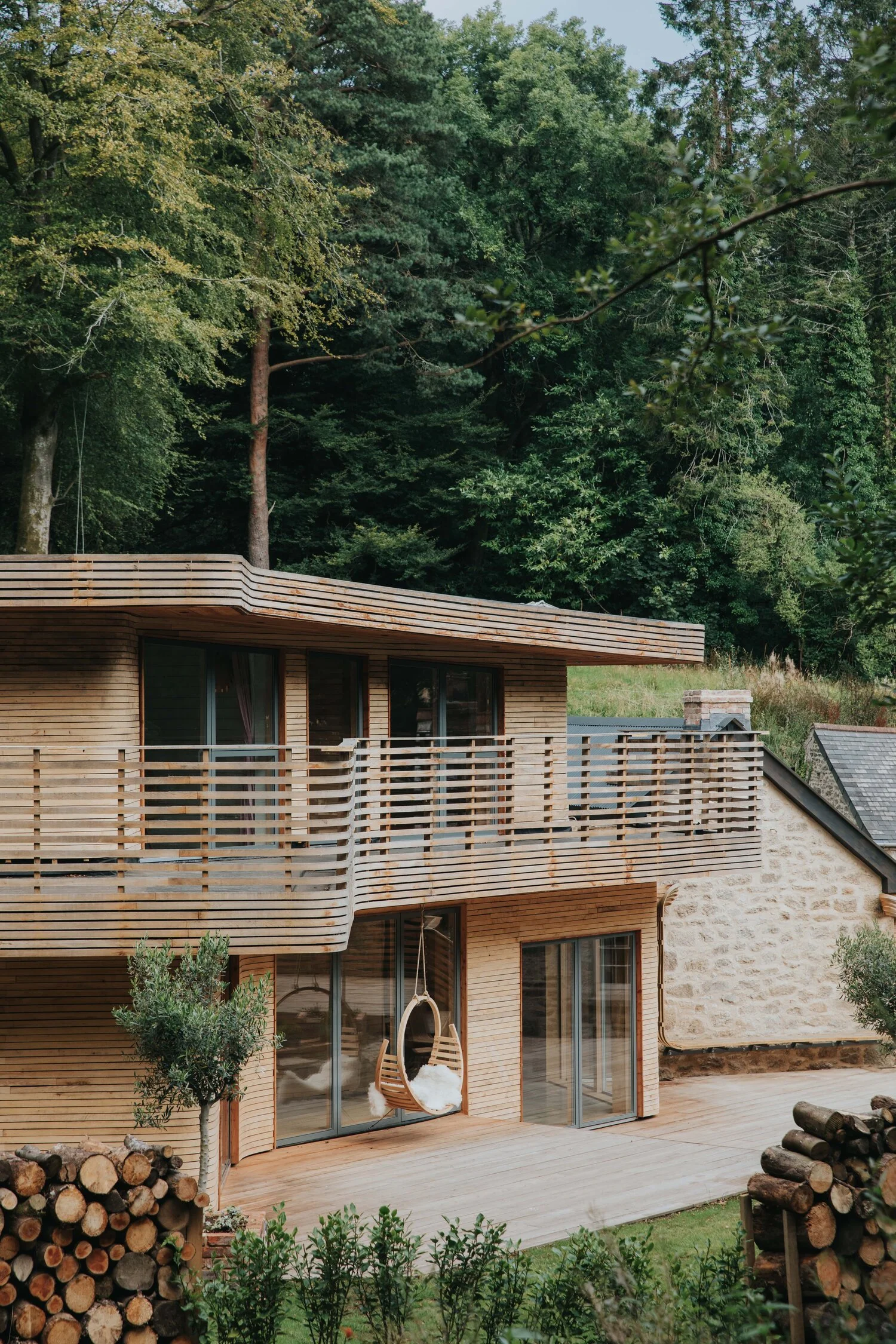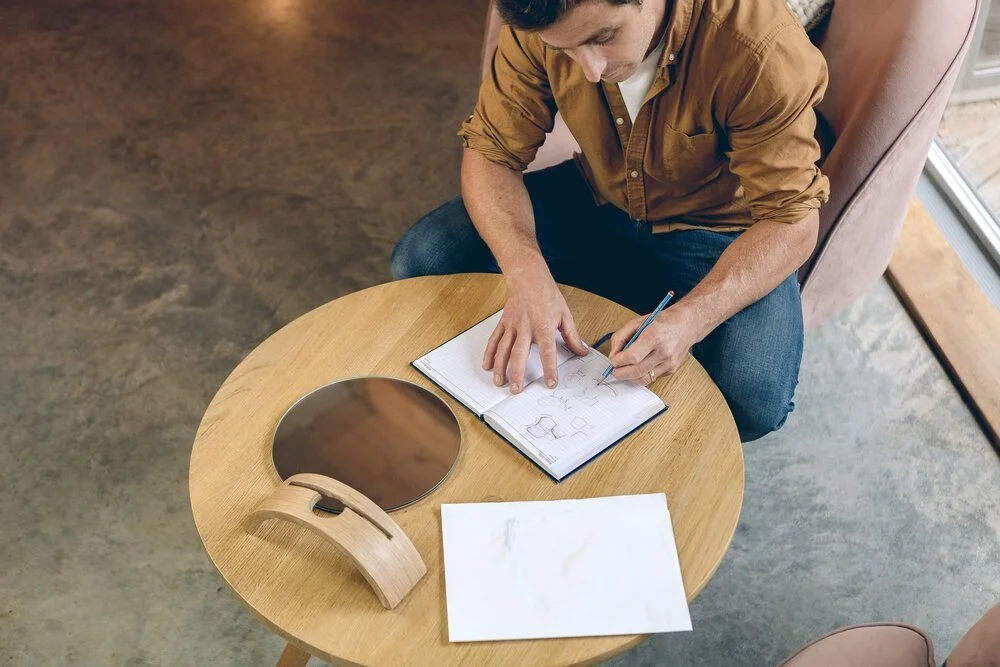How to communicate sustainability
We meet the Cornish based designer Tom Raffield, whose sustainability efforts are at the heart of everything they do, and discuss why standing out as a sustainability leader is so important to build trust with your clients and grow your business
“63% of consumers consider a brand’s promotion of sustainability to be an important purchasing factor” ECOAGE.COM
In an ever-growing ethical marketplace, where the consumer is increasingly seeking reassurance for eco-friendly products and sustainable design, communicating sustainability is key to the future success of any growing business. Reducing consumption of non-renewable resources, minimizing waste and reducing negative impacts on the environment are processes that not only need to be adhered to but are facts the sustainable shopper needs to hear in a company’s sustainability pledge.
With the G7 Summit (certified as carbon neutral) recently concluded in Cornwall, and the continuous goal of reducing greenhouse emissions at the front of everyone’s mind, companies who want to grow and build post-Covid-19 should be busy focusing on the sustainability pledges that will ultimately take their business to the forefront of the sustainable shopper’s mind.
"I truly believe sustainability should be synonymous with good design."
Tom Raffield
One such business whose sustainability message is both transparent and consistent, is Cornish based designer Tom Raffield, a design-led brand that crafts functional pieces with long-lasting quality. Leading the charge in sustainable design, Tom is driven to produce excellence with as little environmental impact as possible. We spoke to Tom to see how his sustainability vision has shaped his business.
How has the Cornish landscape shaped your designs and given you inspiration?
Our Cornish surroundings inspire everything we do. From the designs we create to how we source our materials, we honour our environment at each step of the way. We design, create, make, sell, and deliver the entire Tom Raffield product range from our studio and workshop in Falmouth and this feels incredibly special.
Image credit: Tom Raffield
Whether it’s the power and beauty of the ocean or the dramatic lines and tiers that make up cliff faces, every inch of Cornwall provides me with inspiration - I think the natural beauty shines in each product.
What have been the product designs you have been most proud of?
Every design holds a special place in my life as it has shaped our product range on our journey so far. I’d say I go through stages of favourites. Currently, it’s our Amble Hanging Seat. Not only is the Amble a real showstopper, but it also takes an amazing team effort to bend the ash wood into place. The process involves a three-person bend, with ample time to dry and finish and for me, it shows our steam bending craft to it’s very best ability.
Image credit: Tom Raffield
Have you had challenges in shaping the communication around your sustainability credentials?
There’s definitely been a big cultural shift in companies labelling themselves as ‘sustainable’ in recent years – a reaction to the changing consumer market. But we set out our vision long before the word “sustainability” was fashionable. For us, this is a calling and not just a business. A calling that we put our heart and soul into - and have for over a decade. As a design-led brand, crafting functional pieces with long-lasting quality, sustainability has always been our goal. As we move forward we strive to build on this pledge each year and set new goals to help fight the climate crisis.
As you have scaled, did you find it hard to maintain your sustainability credentials? How have you navigated that?
From the beginning, we set out to put product quality, the environment and the way people are treated first, and this has led us to where we are today. We would never want our growth to affect the quality or sustainability of our products, so this is crucial from the very start of a supplier onboarding. These practices are not only good for the planet and people who live here, but they also support sustainable business growth and employment.
What advice would you give to up and coming designers about how to demonstrate their own commitment to sustainable design?
My advice would be to stick with it. Unfortunately, sometimes sustainable choices can be the harder or more expensive options when starting out. However, the more we talk about sustainability and make conscious choices to better the planet, the easier this will get. So, sticking with your sustainability pledge is vital.
Image credit: Tom Raffield
With the G7 conference recently concluded, what could the UK government and other leaders do to support businesses more as we come out of the pandemic from an environmental perspective, supporting sustainability and more in business?
The planet had a chance to regrow and gain strength over the pandemic, in the absence of human interference, which would be a shame to lose now. I would love to see the support and actual green laws from the government, urging communities and businesses alike to accelerate this progress, not return to how it was before. If this pandemic has taught us anything, it is how adaptable humans can be, so we should use this adaptability to better the environment and make planet conscious changes.
What are your ambitions for the business in 2021 and beyond?
A consistent goal throughout our team is to continue to learn, understand and grow, in every aspect of the company. There are still so many things for us to learn, and as long as we have the hunger for that knowledge, our business will only get stronger. Big or small changes are still positive, and we will continue to do what can to create a sustainable future and inspire people to live sustainably.
“Users are not only becoming more interested in sustainability topics but they are looking more closely at how this information is being communicated to them too” ECOAGE.COM
Letting your customers and followers know that your company genuinely cares about the environment, and making yourself stand out as a sustainability leader, requires a clear strategy and transparency. Companies are often so worried about getting their sustainability message wrong, they often don’t say enough. Consistency within the message is key, simply using sustainability as the buzzword it has rapidly become, is not enough.
“80% of Pinners are looking to shop for more sustainably made products” Pinterent Trends Report, June 2021
To build trust with consumers, sustainability needs to start with the suppliers you partner with, through to engagement with your staff and communication to your customers. Today’s eco-savvy consumer will weed out the businesses intent on only paying lip service and falling short on their sustainability pledges.
“Professional communications and good intentions are no longer enough” IMD.ORG
It has been recently reported that 33% of British consumers will stop engaging with companies or buying from brands that don’t publicly share their ethical policies – getting the sustainability message right and running it through every aspect of the business is not only good for the environment, but it can also be the difference between a successful business or a failing one. Keeping the message positive, making it relevant and raising the bar on sustainability expectations are all ways of keeping ahead of the competition and making your business a clear winner in the sustainability stakes.




